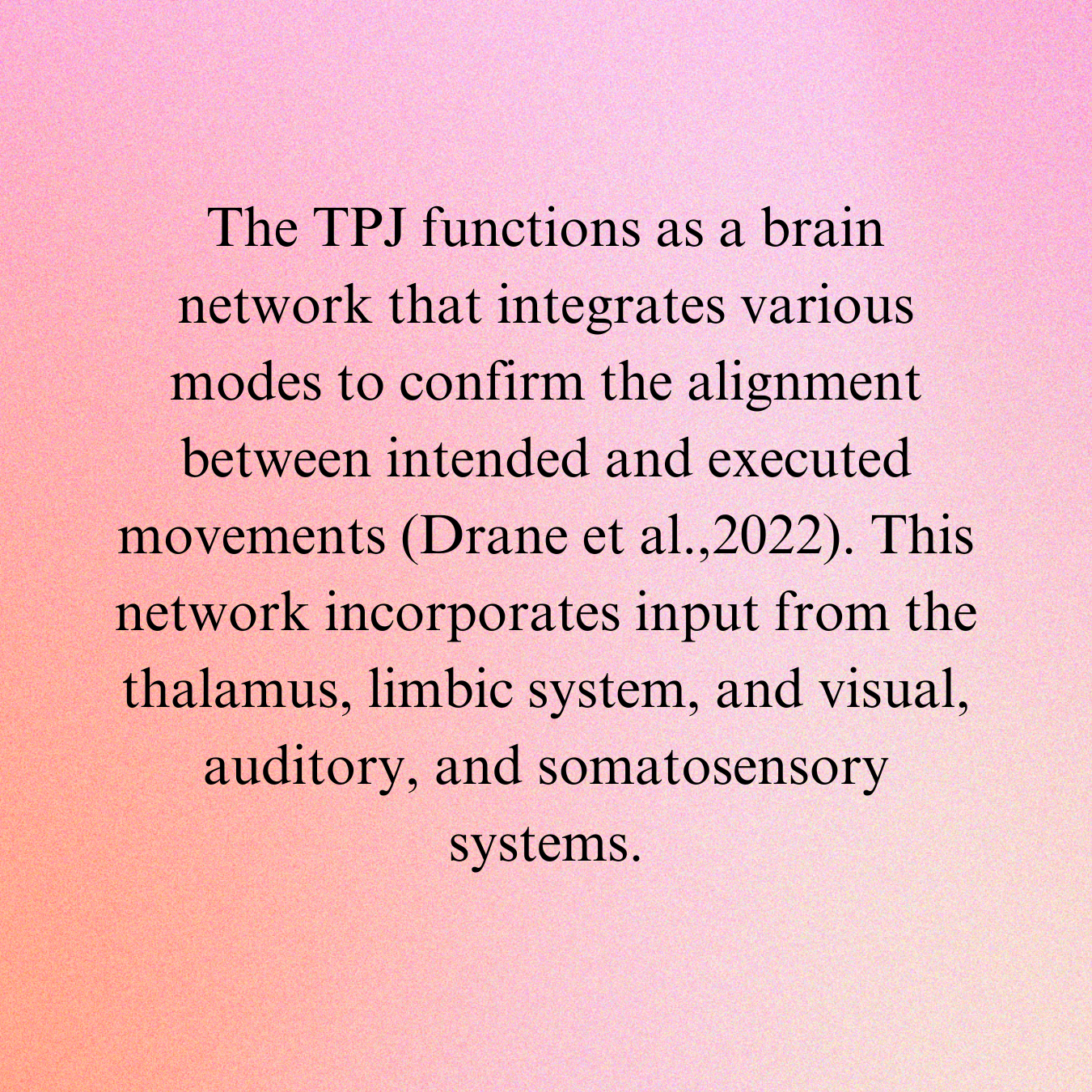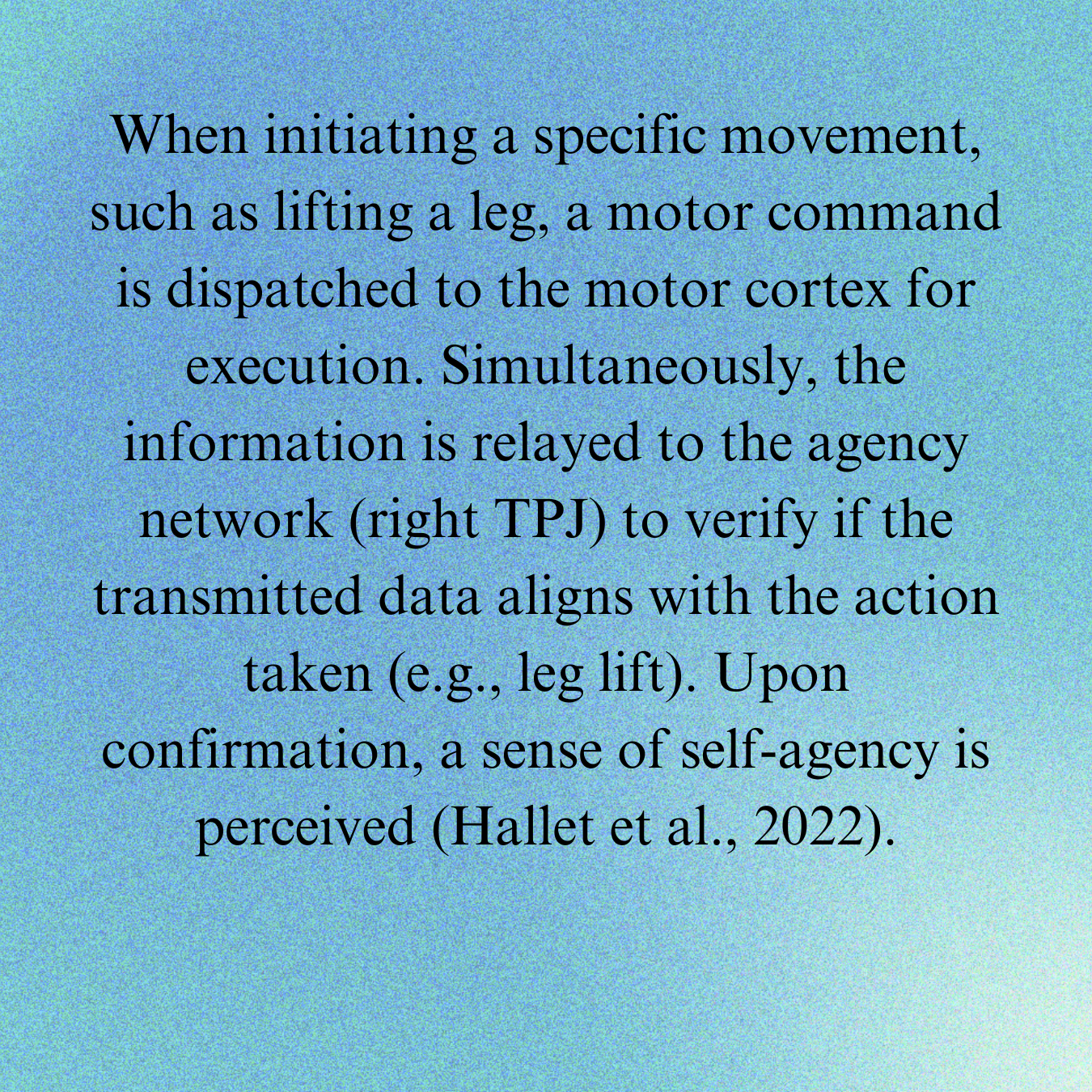Self-agency
When we step forward with our foot while walking, we automatically feel that it is we who have caused the foot to move and that the moving foot is ours. These two experiences are actually separate phenomenological experiences that naturally merge into one during everyday voluntary behaviour, but there is a wide range of literature from cognitive neuroscience as well as philosophy that examines these separate processes of agency of the self and sense of ownership of one's own body.
Self-agency refers to an individual's belief that his or her actions are a direct consequence of his or her own intentions -this is the sense of free will that characterises the voluntary movement (Drane et al., 2020; Nahab et al., 2010).
Two conditions must be met in order to talk about the self-agency:
the person or agent must have a sense of ownership of the movement (e.g. you want to move forward); and
the movement made must be consistent with the person's or agent's intention (e.g. you have really stepped forward).
Movement disorders can be classified as either hyperkinetic disorders or hypokinetic disorders, and similarly in the context of the agentic self. Thus, some individuals may be hyperagentive, meaning that they experience an exaggerated sense of control over movement, while others may be hypoagentive, experiencing a reduced sense of control over movement (Haggard, 2017).
Self-agency in the brain
The Self-Agency and FND
Drane et al., (2022) hypothesise that patients with FND either have impaired brain function of the temporoparietal junction or abnormal influences on the motor cortex cause abnormalities in the signal whose function is to confirm the correspondence between the intended and actual movement.
The abnormally increased attention to FND symptoms also potentially explains why explicit/intentional movements (lifting the leg during examination) are more difficult for FND patients to perform than implicit/automatic movements, as explicit movements involve a different motor programme.
Some patients with FND experience a deficit in the agency of the self, which is reflected in the experience of movements as involuntary. In fact, patients often say that they give a signal to the brain to e.g. lift the leg normally, but the movement they actually make does not match the desired movement. As a consequence, at least in some patients, the brain network of the agentic self does not function optimally, as confirmed by studies showing dysfunction of the right temporoparietal junction in patients with hyperkinetic movement disorder and func-tion tremor (Maurer et al., 2016).
The figure shows reduced functional connectivity between TPJ and sensorimotor regions in patients with FND.
Reproduced from:
Maurer CW, LaFaver K, Ameli R, Epstein SA, Hallett M and Horovitz SG. (2016) Impaired self-agency in functional movement disorders: A resting-state fMRI study. Neurology, 87(6):564-570. https://n.neurology.org/
-
Maurer, C. W., LaFaver, K., Ameli, R., Epstein, S. A., Hallett, M., and Horovitz, S. G. (2016). Impaired self-agency in functional movement disorders: a resting-state fMRI study. Neurology, 87(6), 564-570.
Nahab, F. B., Kundu, P., Gallea, C., Kakareka, J., Pursley, R., Pohida, T., ... and Hallett, M. (2011). The neural processes underlying self-agency. Cerebral cortex, 21(1), 48-55.
Perez, D. L., Nicholson, T. R., Asadi-Pooya, A. A., Bègue, I., Butler, M., Carson, A. J., ... and Aybek, S. (2021). Neuroimaging in functional neurological disorder: state of the field and research agenda. NeuroImage: Clinical, 30, 102623.





